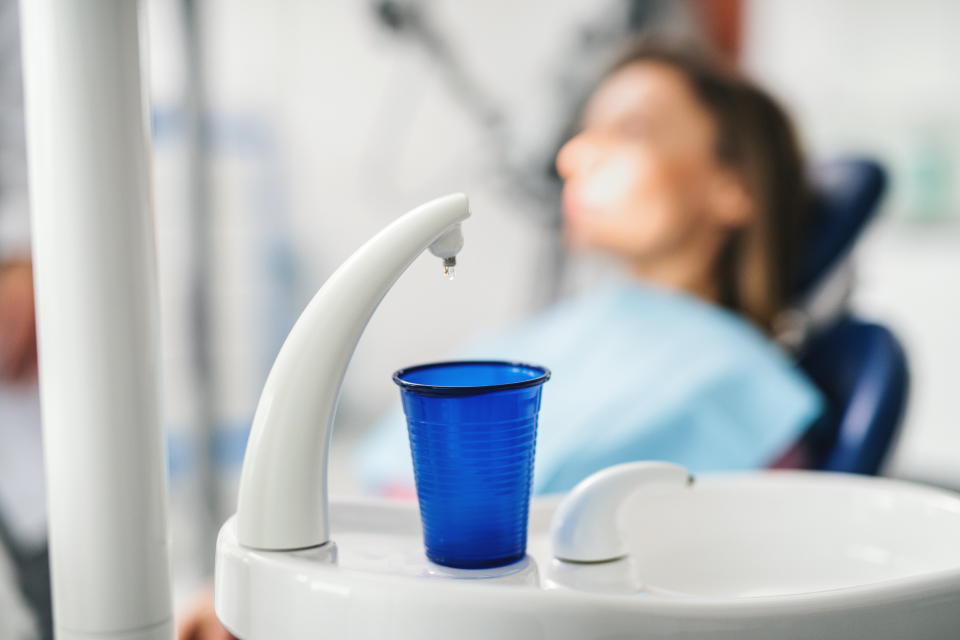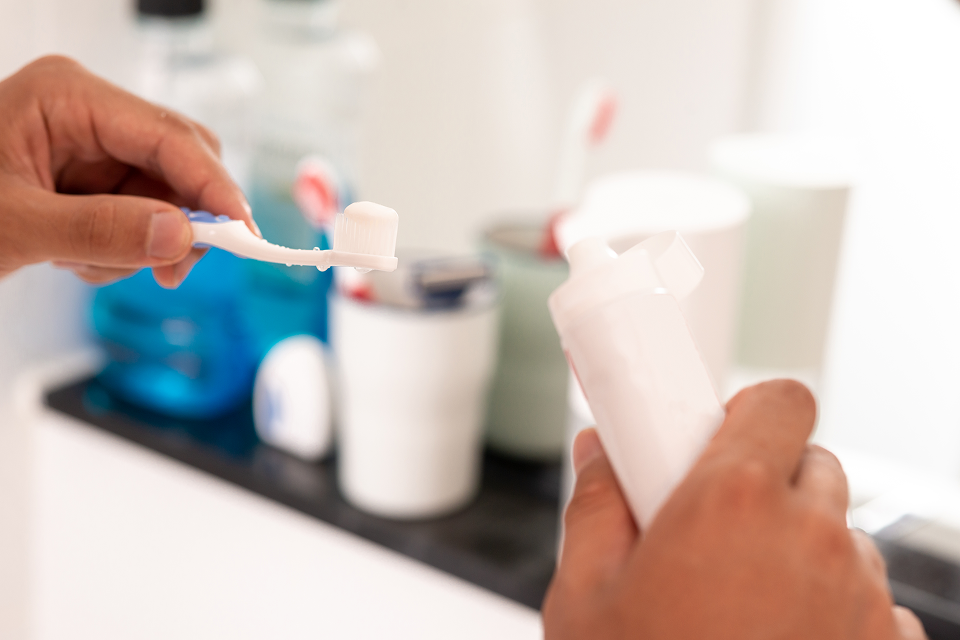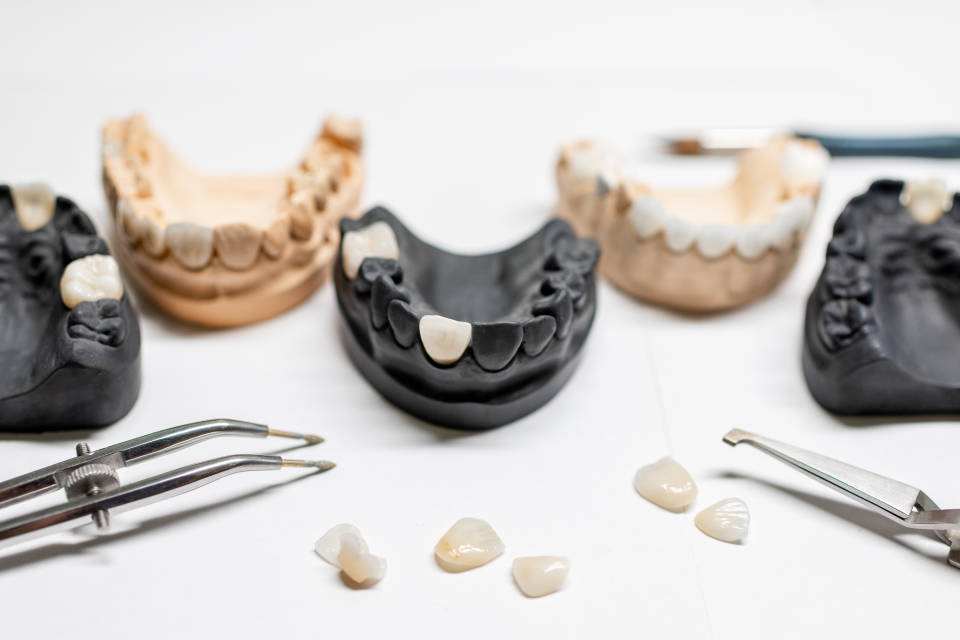A dental crown is a custom made prosthetic that is used to fix broken, decayed or weakened teeth. It is a cap that covers the tooth to restore the tooth shape, make it look more aesthetically pleasing, and keep it structurally sound. Dentists sometimes use dental crowns to cover dental implants and teeth that have had root canals. Occasionally crowns can be used for cosmetic reasons when there is no damage to the tooth. The type of dental crown and materials used is determined by the dentist and depends on the location, as well as how much natural tooth is remaining. If you have cracked or broken teeth or significant tooth decay, it might be time to consider a dental crown.
Reasons to get a Dental Crown
If you have regular tooth pain, cracked or broken teeth, dental implants or even gum disease, you may need a dental crown. Dental crowns serve multiple purposes, protecting and supporting weak teeth. A dentist may recommend a dental crown for any of the following reasons:
- Cracked, chipped or broken teeth: Teeth can become cracked, chipped or broken from biting down on hard food, trauma or injury, and even bruxism (teeth grinding).Although enamel is the strongest substance in the human body, injuries can occur under these circumstances. Cracks, chips or breaks in the tooth can become sensitive and painful over time and a dental crown is a common solution for solving these problems.
- Teeth with large fillings: Fillings are a common treatment for minor tooth decay but when a large filling is required a crown may be used. A crown encases the tooth rather than filling it in and ensures structural integrity.
- Support for dental bridge: A dental bridge is used to replace missing teeth and requires dental crowns placed over the original teeth at each end with artificial teeth in between. Dental bridges and crowns can only be used when there are healthy strong teeth on both sides of the gap.
- After root canal treatment: A root canal treatment removes infection from inside the tooth and sometimes it can result in tooth weakening. In these cases a dental cap is recommended to help protect the tooth from cracking and prevent tooth loss.
- Cosmetic reasons: For those with severely stained, discoloured teeth or misshapen teeth, dental crowns can dramatically improve their appearance. The crown is a custom made cap in the shape of a tooth to fit over discoloured or misshapen teeth and restore their size, appearance and shape.

Difference Between a Dental Crown and a Cap
There seems to be some confusion between a dental crown and cap with many people thinking they are two different dental treatments. Dental crowns and caps are actually the same thing, although for many years dental crowns were referred to as caps. While some older people may still use the term ‘cap’, most dentists refer to the procedure as a ‘dental crown’ today.
What Happens During a Dental Crown Procedure?
Two visits are required to the dentist for a dental crown procedure. The tooth needs to be prepared and a permanent crown made in the laboratory on the first visit. On the second visit, the permanent crown is fitted. The steps for a dental crown procedure include:
Visit 1.
(About 1 to 2 hours)
The first visit is the longest of the appointments where the dentist must assess the tooth, prepare and apply a temporary dental crown.
- Tooth examination: During the first visit, the dentist will thoroughly examine the tooth and may take x-rays to assess the tooth roots and surrounding bone density. This is important because the dental crown will need a solid foundation for stability and longevity. The jaw bone is the base for the crown and, if compromised due to the effects of gum disease or other issues, a dental crown may not be the best option.
- Preparing the tooth: After determining if a dental crown is needed, the dentist will prepare the tooth for a crown. This involves removing some of the natural enamel to reshape the tooth and prepare the surface for the crown to fit comfortably and securely over the original tooth.
- Dental impressions: A dental impression of the tooth is taken. These impressions capture the exact shape of the tooth and the surrounding teeth to ensure the crown will fit perfectly. Impressions can be made either with a putty like material or digital impressions with a handheld scanner.
- Temporary crown: The dentist places a temporary crown over the damaged tooth. This is often made from materials like acrylic, composite or stainless steel which are all suitable for short term use. The purpose of this temporary crown is to protect the tooth while the crown is being made.
- How to care for a temporary crown: While the temporary crown is in place, it is important to be cautious and follow some guidelines. Don’t eat hard or sticky foods and try to eat on the opposite side of your mouth to where the crown is to minimise pressure. Brush and floss more gently than usual. If you notice any movement of the crown, discomfort or tooth sensitivity, contact your dentist.
Visit 2.
(About 30 to 60 minutes)
The second visit usually occurs about two to three weeks after the initial visit, once the permanent dental crown is made.
- Temporary crown removal: In order to prepare for the permanent crown, the dentist will remove the temporary crown and prepare the tooth.
- Permanent crown placement: To make sure the crown is ready for placement, the dentist will check its shape, fit and colour when it returns from the laboratory. Proper crown placement is imperative so the crown will be checked to make sure it matches your bite and aligns perfectly with the adjacent teeth.
- Bonding the new crown: Once the fit is deemed perfect, the dentist will bond the new crown to the teeth. An adhesive is applied to the tooth so that the crown can be secured over the top. A curing light is then used to harden the adhesive and make sure the crown stays in place.
- Crown polishing: After the crown is cemented to the tooth, the dentist will make final adjustments and polish the crown so it matches your natural teeth.
- How to care for a permanent crown: It is important to keep a permanent crown in good condition so make sure you brush teeth twice a day, and floss once a day. Avoid extremely hard or chewy foods and, if you clench your teeth, discuss a mouth guard or other treatment options with your dentist.

Recovery from Dental Crown Procedure
After a dental crown procedure you may have some sensitivity or soreness but that should dissipate within a few days, as the mouth recovers from the irritation and inflammation from the procedure. Side effects like hot and cold sensitivity may last up to a few weeks. After a dental crown procedure you may experience these symptoms:
- Some sensitivity and soreness: Following a dental crown procedure it is common to experience some discomfort in the affected area of the mouth. Usually an over the counter analgesic will ease any pain. An anti-inflammatory like ibuprofen can also reduce any swelling. Temporary sensitivity to hot and cold is common also but should only last a few days. If sensitivity lasts longer than a few weeks, contact the dentist as it may be due to an improperly fitted dental crown or gum irritation.
- Temporary numbness: As the dentist may have used a local anaesthetic for dental crown procedure, temporary numbness may be a side effect. This should last for no more than a couple of days. During that time, be cautious about biting your cheek and avoid chewing on the numb side.
What to do After a Dental Crown Procedure
The aftercare from a dental crown procedure usually involves initially avoiding hard foods, taking pain medication if necessary, and maintaining oral hygiene. Follow these tips to look after a new dental crown.
- Keep pain to a minimum: Use mild analgesics or anti-inflammatory medications.
- Keep an oral hygiene routine: Keep your mouth clean with regular brushing and flossing and using antibacterial mouthwash.
- Avoid hard, chewy or sticky foods: Do not eat hard foods like nuts or sticky toffees as this may dislodge the new dental crown.
- Quit smoking: Smoking will hinder recovery so quit smoking to avoid any potential complications.
- Regular dental visits: It is imperative to keep up with dental visits to ensure longevity of the dental crown. Visit the dentist two to four weeks after the dental crown fitting, and then six monthly checkups after that.

Benefits and Risks of Dental Crowns
A dental crown can prolong the life of a tooth, improve function and appearance. They have a plethora of benefits, and help restore the ability for people to chew and speak properly. There are some minor risks. We examine the benefits and risks of dental crowns here.
Benefits
- Treatment for worn, broken or decayed teeth: Dental crowns are an excellent solution for damaged teeth that are worn, decayed or broken. Without a dental crown, these teeth would be highly susceptible to further decay, deterioration and even tooth loss.
- Aesthetic improvement: Dental crowns can provide a cosmetic makeover for teeth that are discoloured, broken or misshapen. They are customised to match the surrounding teeth in colour and shape.
- Improve chewing: For those with broken or misshapen teeth, chewing might have been an issue. Dental crowns provide a cap over the tooth that makes chewing easier.
- Longevity: Dental crowns ensure a damaged tooth can last longer.
Risks
- Can cause tooth sensitivity: Teeth can become more sensitive after a dental crown procedure which can be uncomfortable.
- Can break or fracture: Dental crowns can break or fracture from biting on a hard object, teeth grinding or trauma.
- May be expensive: Dental crowns made of high quality materials like porcelain or zirconia can be expensive.
Dental crowns are a long lasting solution for broken, damaged or decayed teeth. They are often used after procedures like root canal or dental implants to ensure the tooth remains stable. A dental crown procedure is performed over two appointments and usually takes about three hours in total. It can improve the look of your teeth and rescue teeth that may otherwise have been lost. To find out more about dental crowns, contact the team at Hawthorn Road Family Dental Clinic.





